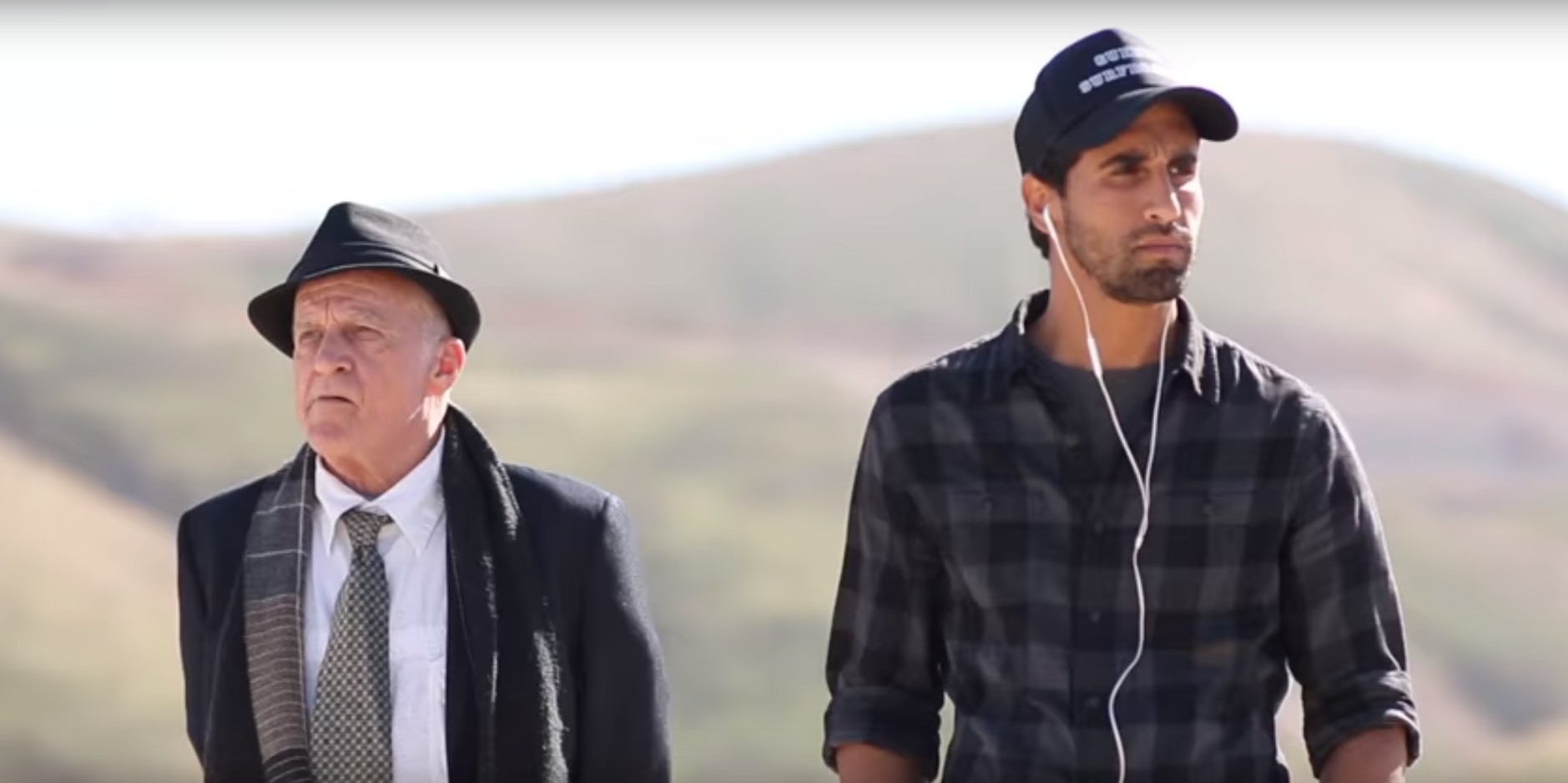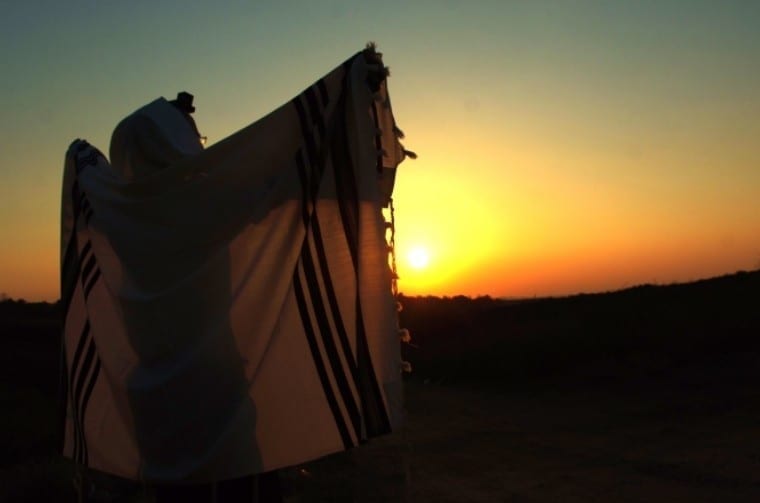As the college rabbi at the Hermon rehabilitative correctional facility in the north of Israel, prison officer David Ochanona is involved in a most unusual and singular activity, as this is not just a regular prison facility, but rather one where the orientation of prisoners' treatment is towards rehabilitation. Prisoners who arrive at this prison know that through intense and consistent personal development together with the prison staff, they have a chance of walking out to an entirely new and different life from that which they had known before they entered prison.
Despite the fact that the prison is geared towards those who have been incarcerated for relatively short periods of up to five years, Rav Ochanona says that dealing with then is no less difficult that dealing with those sitting in jail for more serious offences. “We treat prisoners with all kinds of variations and levels of addiction- ranging from addiction to drugs and alcohol to those who are addicted to different types of violent behavior “, says Rav Ochanona who despite his young age has already served for eight years as an army rabbi and as the Rabbi of the Megiddo prison facility.
So how is the Hermon prison different from the other prisons in the country? A prisoner who comes there goes through a process of resocialisation, or reeducation. “An entire team of psychologists and other professional staff build a treatment program for him from A to Z, whose goal is to totally rehabilitate him so that he will be able to function like any other person when he is released”.
It is amazing to discover that of the 600 prisoners in the correctional facility, only 60 are in the Torah section. Why is this so? That's a good question. Apparently if one wants to belong to this section, one must pass a special selection committee, which includes an interview with the Rabbi and an assessment of the seriousness of one's intent and ability to maintain one's dedication to achieving one's goals. “In the Torah section there are demands which differ from those of other sections, and a prisoner who wishes to join this section must not just declare his intent to keep mitzvot, but also actively keep the mitzvot for a period of time”, says Rav Ochanona.
What is the prisoner's daily schedule in this section?
It is quite diverse. On the one hand they have their social life, free time and activities. On the other hand there are certain fixed times during the day when they have to appear in the Beit Midrash to pray and study. Besides this there are other therapeutic groups where the prisons learn and internalize basic life insights, and this is where the religious aspect comes into play- teaching a prisoner how to improve his behavior and how to overcome his emotional issues which he may suffer from, each according to his level of addiction”.
There are no bad people –only bad behaviors
I want to ask about the less savory aspects of your job: A person is sitting in front of you whom you know committed a crime which hurt another person. How can one help such a person objectively without being prejudiced against him?
“In my position and that of the wonderful staff I have there is no room for patronizing. We understand that one must distinguish between the action and the person and this is our motto. We are here to receive everyone to love all of them and to help all of them and it doesn't matter whether he committed a small felony or a more serious one. My job is to transmit to them values that nobody ever taught them, which is why they ended up where they did. There is no person who does not deserve a second chance, and G-d is merciful and helps all of His children, wherever they have fallen to.
But let's not delude ourselves that this is an easy job. “It is a difficult and complicated assignment to come into daily contact with people who society has condemned. If I don't believe in a prisoner, in his ability to emerge from his predicament and achieve a better situation, I wouldn't have anything to do here. If that would be the case then in all honesty that would be the end of my career. I get my satisfaction from helping these people, from listening to their problems, smiling at them and knowing that from one conversation with me, a person decided not to end his life. Can you imagine what a great feeling that is? It's impossible to describe with words.”
Regarding the question of whether there are any special programs, Ochanona says: “Certainly. Besides bringing visiting Rabbis to lecture from time to time, my predecessor in this position initiated a program called “Teruma”. This is a project which encourages the prisoners to present ideas for helping and giving to others. It can relate to any topic, such as arranging for a minyan at memorial services, public service, etc.
How can such a project build up a prisoner? How long does it take to see a change in his patterns of behavior?
You have to remember that we are talking about people who never knew what real contributing means and never helped others as they were usually those who received from others. People who don't know what real altruism is have to learn it from scratch- what constitutes giving, why is it important to give and what does a person gain by giving. Anyone who gives of his own volition becomes more refined, has less boorish character traits and if they are working in a genuine manner, the change in behavior is immediately apparent.
Do you have a list of responsibilities for them, or can each prisoner choose an area which interests him?
There is some freedom of choice here, but despite that, we direct each prisoner to contribute in a context where he is proficient. In this way the giving becomes a more personal thing which the prisoner will identify with more. For example, a driving teacher will give a lesson about road safety including the halachic requirement to “guard one's life”, a cook will volunteer to prepare food and explain the halakhot relating to the food he prepares, etc. We want the process to be beneficial and influential for the prisoner and not to be done as an obligation.
What happens during the period before festivals?
There is a lot of activity behind bars during this period. The place has a festive atmosphere, with visiting rabbis coming and telling their personal stories to encourage the prisoners and raise their morale. Today a rabbi came to visit with a terminally ill patient who told his story. The prisoners were visibly moved – some of them cried and others were impressed by the way he dealt with his difficult situation, when he began to mention all the good things he derived from it.
During the period of the festivals I try to speak more with prisoners individually, try to be responsive to every request and to take care of them as quickly as possible, and of course to bring lecturers and singers to visit. Personal stories, words of Torah or entertainment programs really help to strengthen the prisoners”.



